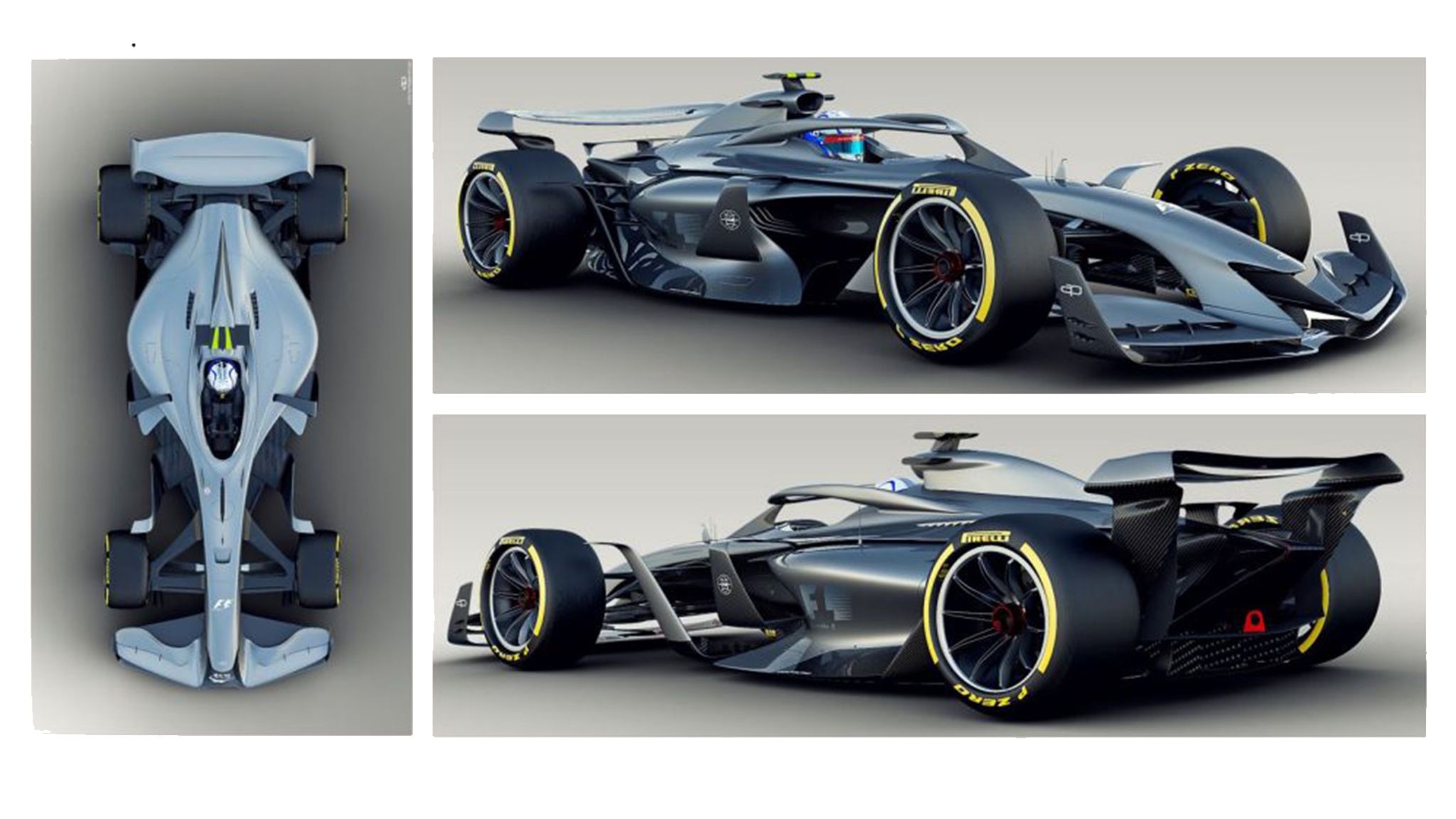Table Of Content

Therefore, in addition to the above changes outlined for the 2009 season, teams were invited to construct a KERS device, encompassing certain types of regenerative braking systems to be fitted to the cars in time for the 2009 season. The system aims to reduce the amount of kinetic energy converted to waste heat in braking, converting it instead to a useful form (such as electrical energy or energy in a flywheel) to be later fed back through the engine to create a power boost. However, unlike road car systems that automatically store and release energy, the energy is only released when the driver presses a button and is useful for up to 6.5 seconds, giving an additional 60 kW (80 hp) and 400 kJ.
Schumacher BLAMES Horner for Red Bull's Newey nightmare
The 2021 season was one of the all-time greats in Formula 1 history, with Max Verstappen in the Red Bull RB16B dicing with Lewis Hamilton all season long in the Mercedes W12. We’re excited to get back racing in Baku and continue that cycle of learning and development. Ferrari might not be facing any problems now, and they certainly look to have started the year with a quick car. An F1 car has to work in a number of different conditions, and it is never a perfect scenario. The moveable section can be up to 960mm wide and, like its predecessor, have an 85mm opening when deployed. The overall width of the wing also remains at 2000mm, but only by virtue of the dive planes mounted on the outside of the endplate, which make up the final 25mm each side.
F1 News Today: ‘Absolute b******s’ Newey claims slammed as Norris INJURED while partying
But exactly how fast they are is perhaps not something people dwell on too often. Whilst the Haas render showed just a single element, there's the possibility for teams to use up to two elements. This can not only have an impact on the wheelbase and positioning of other structures and elements, but it can also influence the design of the coke bottle region. At the rear of the car, there will undoubtedly be some decisions to be made over the design of the transmission casing. One area where teams did things very differently in the past was with car length. The elephant in the room, however, is the looming 2021 technical regulation change.
The car will feature 18-inch low-profile tyres for the first time
How much does an F1 car cost in 2024? Key parts, history of most expensive Formula 1 cars - Sporting News
How much does an F1 car cost in 2024? Key parts, history of most expensive Formula 1 cars.
Posted: Mon, 26 Feb 2024 08:00:00 GMT [source]
The diffuser is the flared opening at the rear of the floor and is the part of the car responsible for generating the most downforce from the underside of the vehicle. As a means of reducing drag, this is a better distance from the front axle, helping to prevent the negative influence of the airflow from the tyre and thereby improving cooling. The new rules made the rear wing taller again and the flap size increased by 20mm, making the use of DRS much more effective in an attempt to improve overtaking. When activated, the system lifts the leading edge of the wing up by 70 millimetres to create a much larger slot gap - and reduces the frontal area of the car.
F1 2025 driver line-up: Who is already confirmed for the 2025 grid?
Here are the 10 key things you need to know about the game-changing 2022 car, a full-scale model of which broke cover at the 2021 British Grand Prix. Use motorsport.com without any advertising banners, personalized tracking and commercials for a small fee. Once all the parts are manufactured and ready to put together, the first actual car build takes about a week, with the car assembled in the race bay. The chassis monocoque is the central section, and all sub-assemblies are bolted onto it. Alongside the carbon fibre process, there is also a large amount of metal manufacturing, much using ‘exotic’ metals.
Is Red Bull’s RB19 the greatest F1 car ever? - CNN
Is Red Bull’s RB19 the greatest F1 car ever?.
Posted: Fri, 06 Oct 2023 07:00:00 GMT [source]
As the diffuser opens up the airflow accelerates further, creating an area of lowest pressure underneath the floor. Airflow is accelerated under the floor where it creates a lower pressure area, thus generating downforce as the higher-pressure air on top of the car pushes it downwards. This airflow can also be used around the edges of the floor, effectively providing a seal. The sidepods also open up at the rear in order to expel any hot air and teams often flare these openings up at circuits renowned for their high temperatures.
F1 Podcast: Hulkenberg's big move - and Newey's?
F1 brakes are 278 mm (10.9 in) in diameter and a maximum of 32 mm (1.3 in) thick. The carbon/carbon brake pads are actuated by 6-piston opposed callipers provided by Akebono, AP Racing or Brembo. The regulations limit the modulus of the calliper material to 80 GPa in order to prevent teams using exotic, high specific stiffness materials, for example, beryllium. Titanium pistons save weight, and also have a low thermal conductivity, reducing the heat flow into the brake fluid.
CHASSIS SHAPE
This would have cost downforce at the front of the car, so they also made the front wings 20cm wider to make up for that. The packaging of a pull rod suspension within the chassis also results in a small Centre of Gravity improvement. However, it can make life a little more difficult for the mechanics when preparing the car or making setup changes, owing to reduced access.

Formula One car
The F1 cars for the 2009 season came under much questioning due to the design of the rear diffusers of the Williams, Toyota and the Brawn GP cars raced by Jenson Button and Rubens Barrichello, dubbed double diffusers. Appeals from many of the teams were heard by the FIA, which met in Paris, before the 2009 Chinese Grand Prix, and the use of such diffusers was declared as legal. Brawn GP boss Ross Brawn claimed the double diffuser design as "an innovative approach of an existing idea". Another controversy of the 2010 and 2011 seasons was the front wing of the Red Bull cars. Footage from high-speed sections of circuits showed the Red Bull front wing bending on the outsides subsequently creating greater downforce.
His recent designs have absolutely dominated the sport since the current ground-effect regulations were introduced in 2022, with Red Bull winning 25 of the last 27 races. This pushes the car onto the track, providing better traction and allowing for higher cornering speeds. At the same time, minimizing drag is essential to achieve maximum straight-line speed.
In this, as in every season, there’s a point at which teams – even teams fighting tooth-and-nail for a title or a good final position in the constructors’ championship – will stop attempting to improve their car. They do it because the returns from improving the current car are outweighed by the need to devote time and energy to the next one. With no major technical changes for 2020, upgrades from 2019 continued to come late into the season because any goodness located for the current car was likely to be transferable to the new. “Behind that, there’s another stream of development that deals with bigger changes,” he added. “This will be things we’ve seen in the wind tunnel that look like they’ll bring performance – but they perhaps need to be combined with something else.
“We used to go down the route of a few big updates each season, each one quite discrete. If we’ve found something that improves the car, we want to get it to track as quickly as possible. From what we can see, there is also a well-crafted aero shape in that undercut that builds on last year’s design.
This can help lower the car's centre of gravity to improve stability and also allows the team to fine-tune the weight distribution of the car to suit individual circuits. In fact, the complex nature of carbon fibre manufacture has allowed teams to bend the rules – quite literally – by creating wings that are weaker in certain areas and can flex under load, passing static load tests but moving out on track. In 2008, the FIA further strengthened its cost-cutting measures by stating that gearboxes are to last for 4 Grand Prix weekends, in addition to the 2 race weekend engine rule. Furthermore, all teams were required to use a standardised ECU supplied by MES (McLaren Electronic Systems) made in conjunction with Microsoft. These ECUs have placed restrictions on the use of electronic driver aids such as traction control, launch control, and engine braking and are tagged to prevent modification.

No comments:
Post a Comment